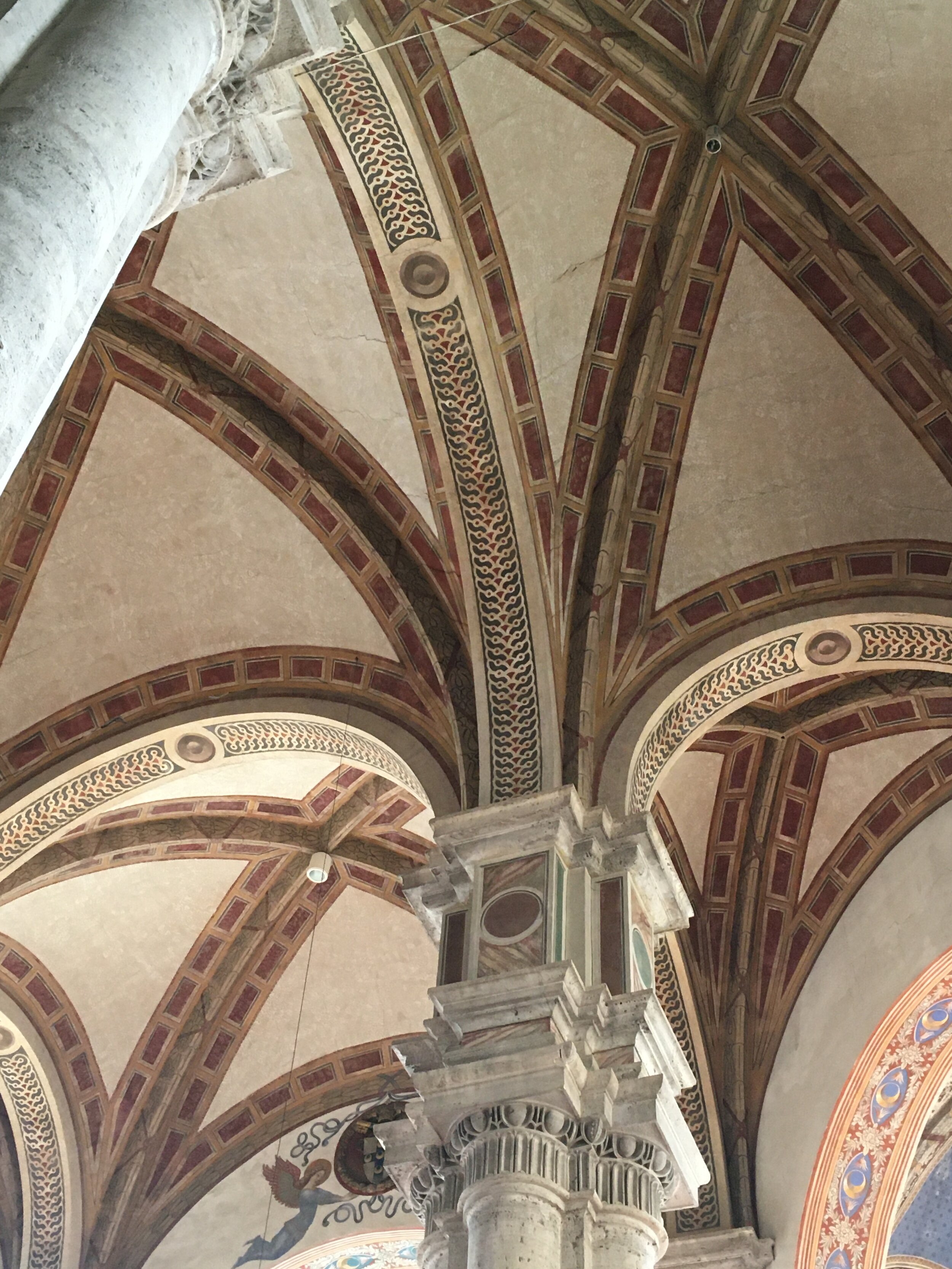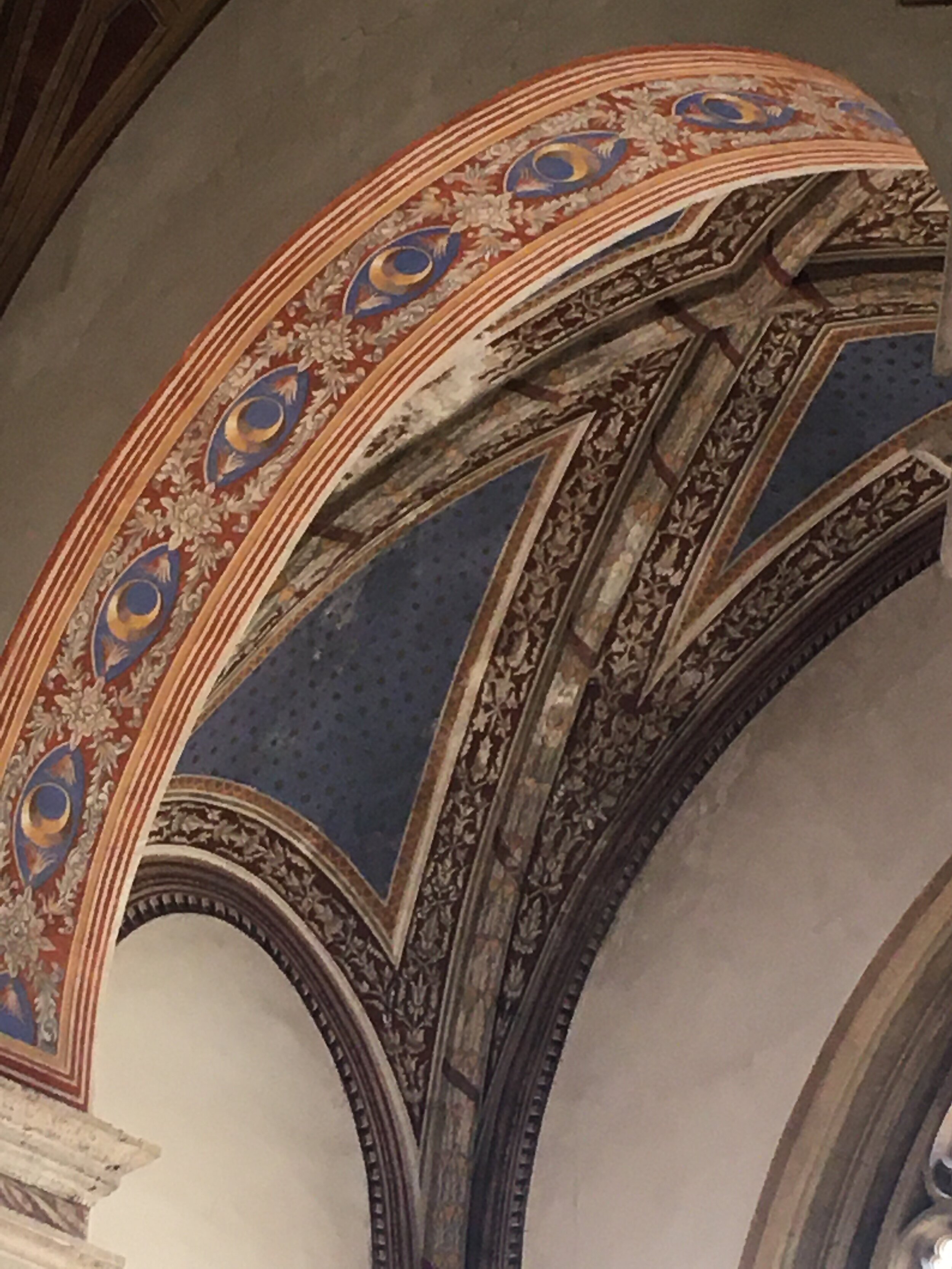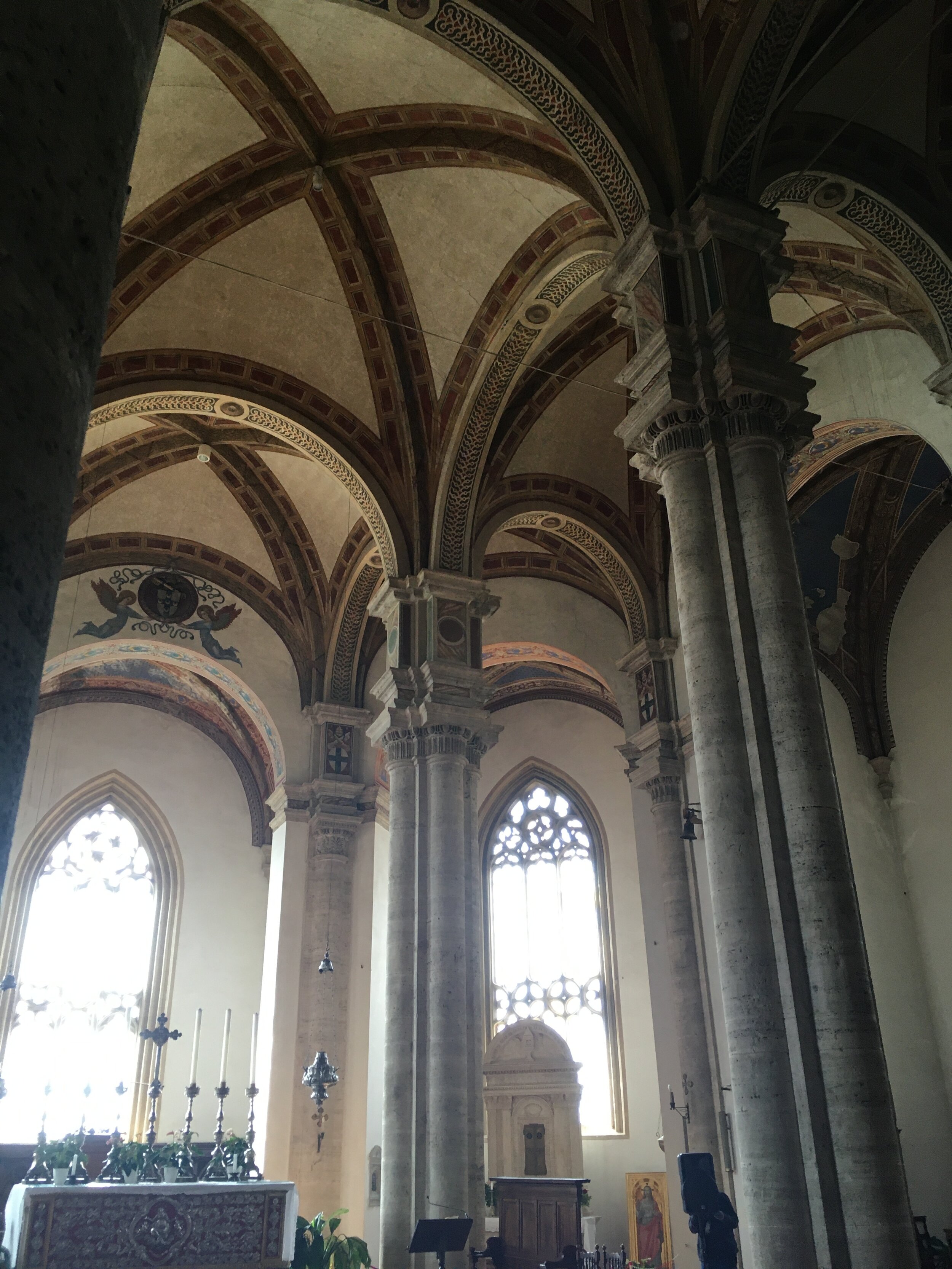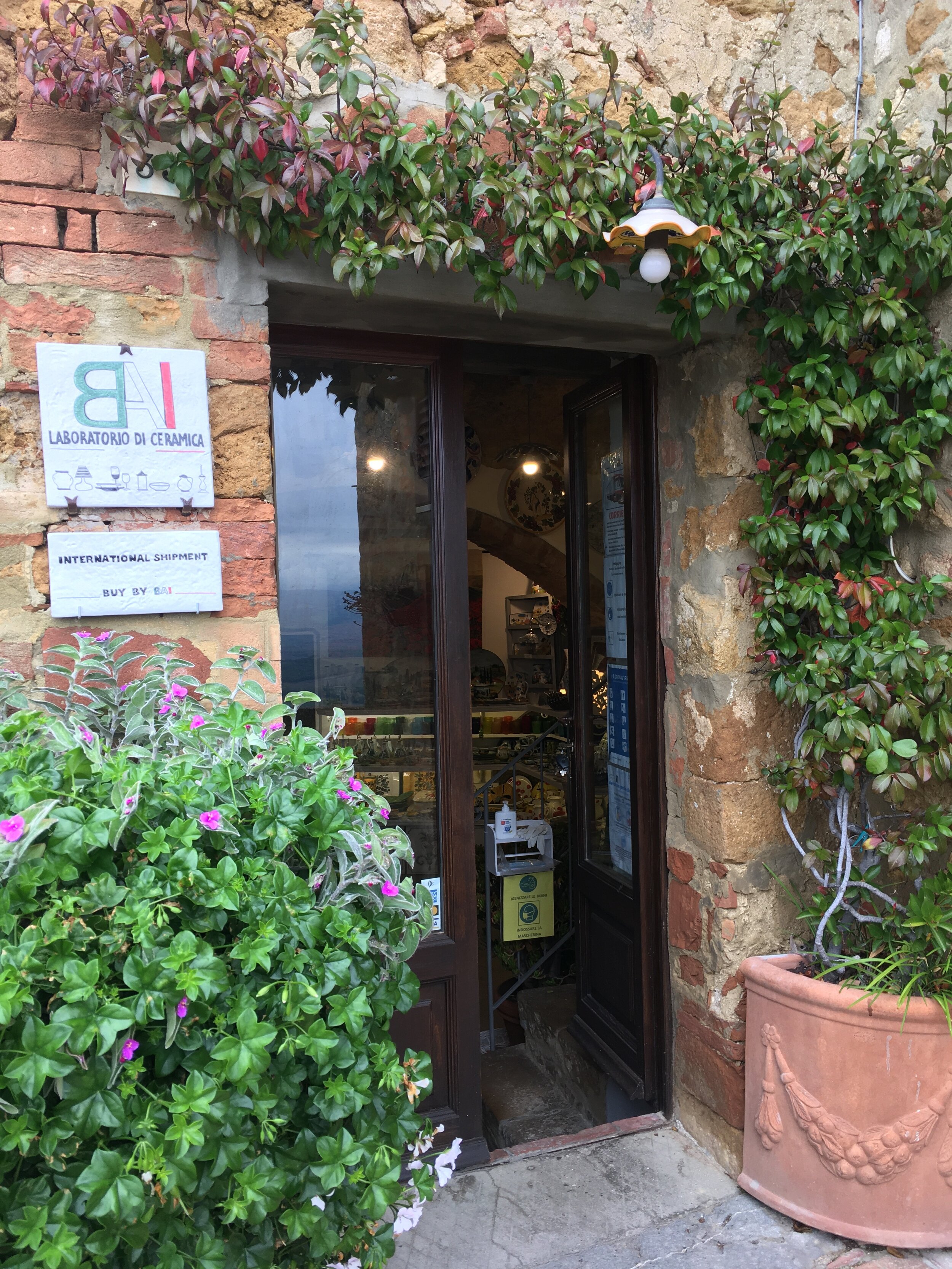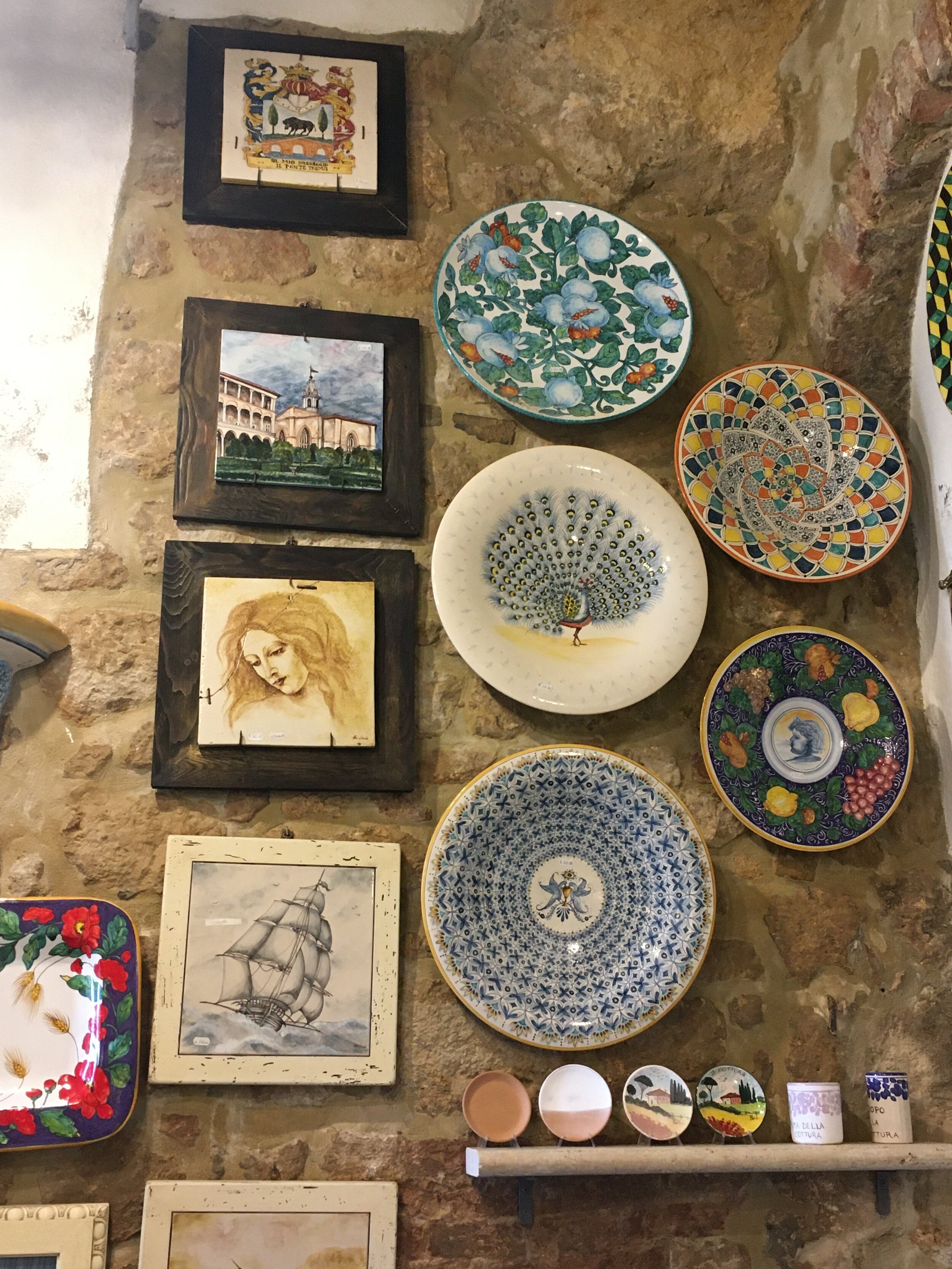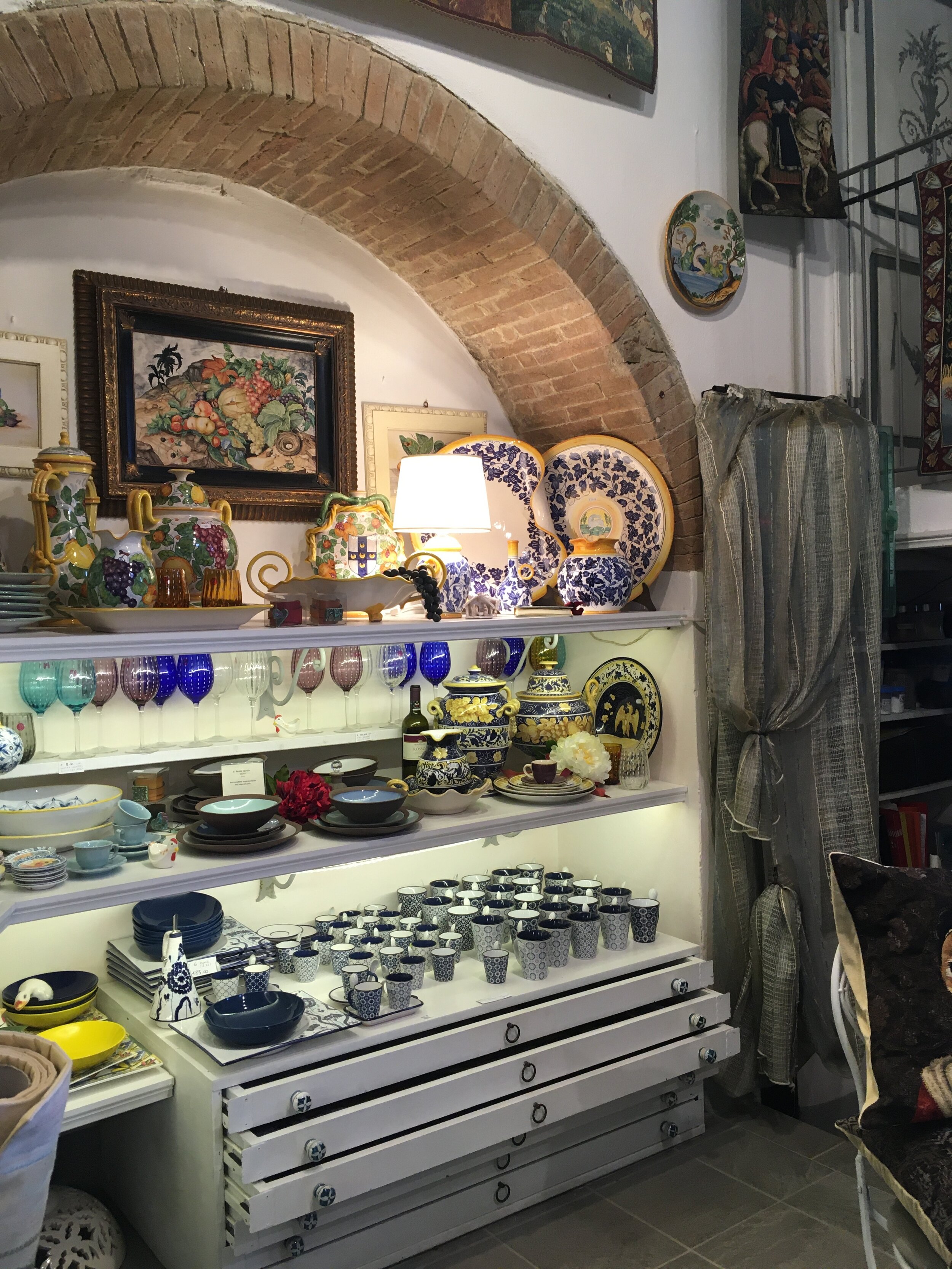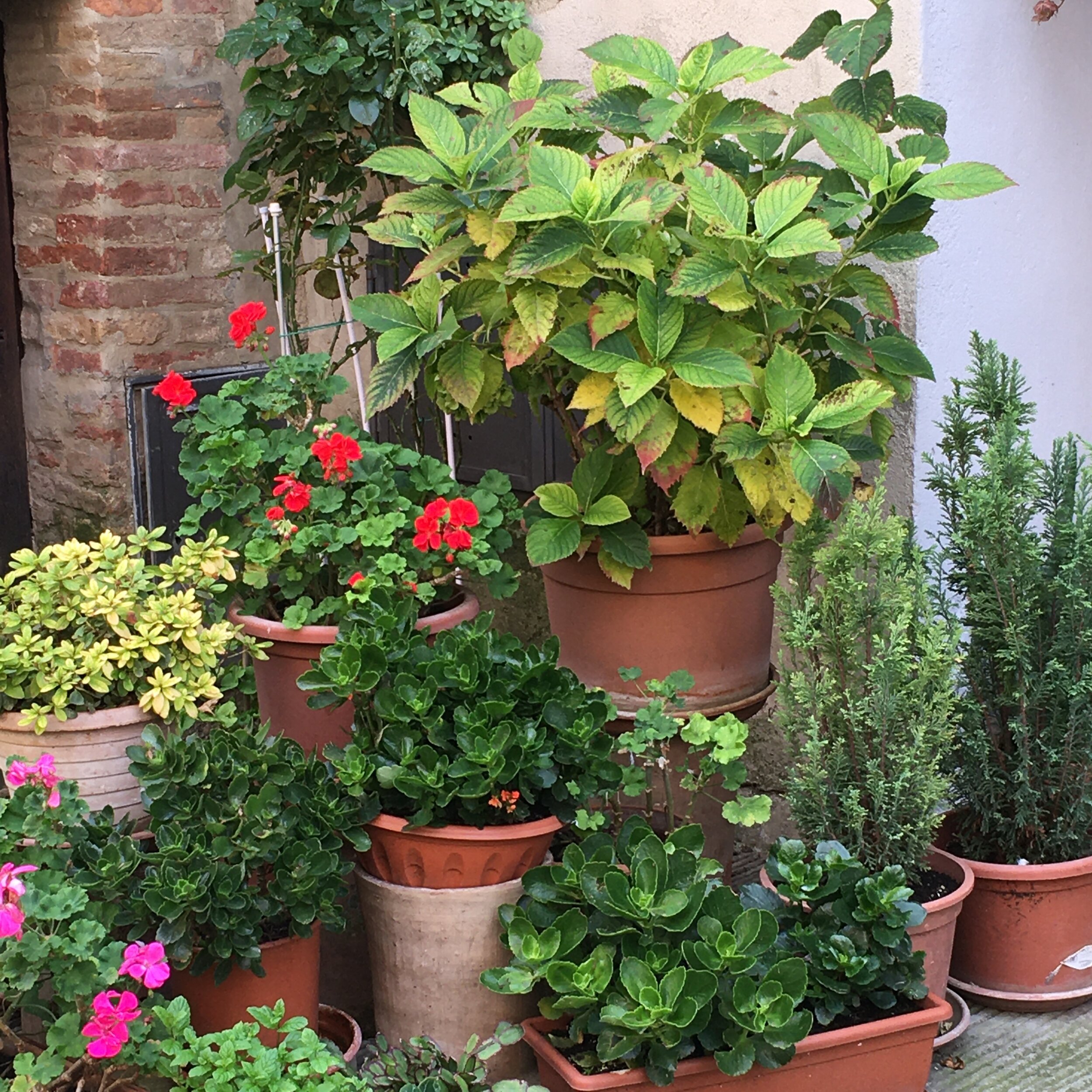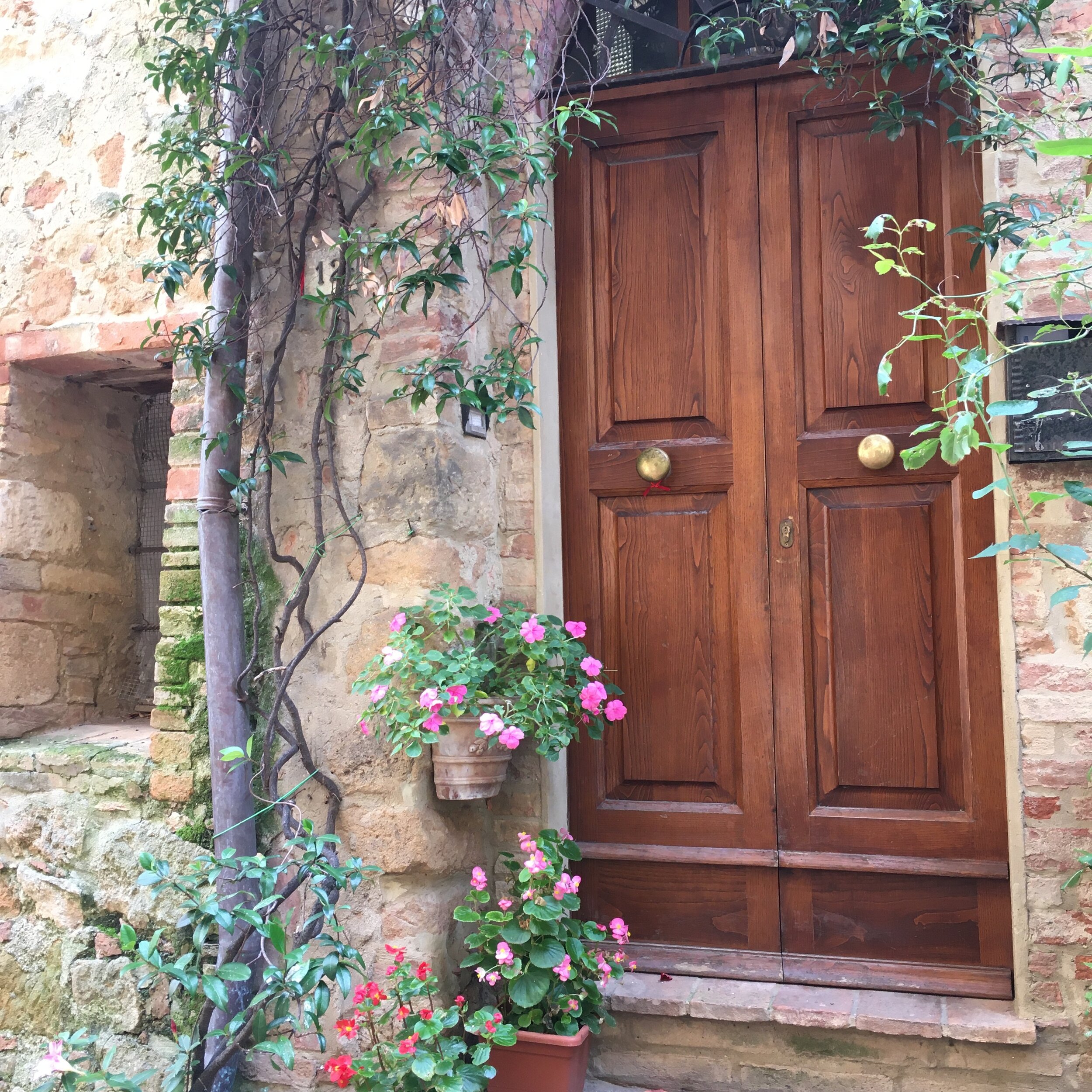Pienza - A Renaissance Jewel of a Town
This frescoed arch tops the entry gate in Pienza. Note the marker saying it was destroyed in 1944 and restored in 1955. Near the end of WW II, an RAF bomb hit Pienza (which was occupied by the German army), destroying buildings on this end of the city and killing 22 residents.
Now that the holidays are over, it is time to return to writing about the Val d’Orcia. Today - the city of Pienza. To really appreciate Pienza, a little history provides important context.
During the 15th and 16th centuries, the Italian Renaissance led Europe out of the Dark Ages. With a fresh look at classical Greek and Roman culture, and a hefty dose of humanistic philosophy, this was a period of great advances in science, art, literature, and economics.
One important figure during this time was Eneo Silvio Piccolomini, born in 1405 in the village of Corsignano near Siena. Eneo Piccolomini grew up to become Pope Pio (Pius) II. A true Renaissance man, he was a poet, historian, humanist, and - something I greatly appreciate - a proponent of urban planning based on Renaissance principles of beauty, proportion, and classical form.
As Pope, Piccolomini decided to restructure Corsignano, transforming it from a Medieval village into the ideal Renaissance city. The newly renamed Pienza (meaning the City of Pius - I guess he wasn’t a modest man) would serve as his summer residence, a respite from the Vatican. Working with the architect Bernardo Rossellino, the new town was designed to maximize the views from its hilltop position above the surrounding valley as well as to create a beautiful and harmonious atmosphere inside the city walls.
Pienza is situated high above the valley, with beautiful views.
Today, the historic center of Pienza remains much as it was during Renaissance times. The central square, Piazza Pio II, is anchored by the duomo (cathedral). A modest size church, it makes a statement with gorgeous painted and arched ceilings and a central nave lined with massive stone pillars. The soaring bell tower guarantees that Pienza can be seen, sitting high on the hill top, from across the valley.
On one side of the church is the Piccolomini Palace, once home to Pope Pio II. This is a beautiful building with an inner courtyard surrounded by an arched loggia. The rear of the palace has 3 levels of terrace overlooking gardens and the valley - it’s a “can’t miss” place for the spectacular views. The palace is open for tours and also has a wonderful small gift shop. Opposite the Piccolomini Palace is a second palace, the Palazzo Vescovile, now a museum. These buildings, along with the duomo, frame three sides of Piazza Pio.
The interior courtyard of the Piccolomini Palace
The final anchor in the piazza is the Palazzo Comunale, a civic building. Small in size, the building has a beautiful loggia complete with historic markers and faded emblems as well as a clock tower. A stop for coffee at the nearby Caffe la Posta, provides an opportunity to sit and imagine this piazza as it must have been in the time of Pope Pio II while simultaneously experiencing a small slice of life in modern day Pienza (and a really good cappuccino).
Clocktower of Palazzo Comunale, Pienza
Pienza is not just a place of history. It is also a vibrant small community and one of the prettiest villages I have ever seen.
There is one main street, Corso Rossellino, lined with shops and cafes, and several smaller, charming side streets. As a plus, Pienza sits atop a flat mesa rather than a steep hill which makes for easy walking. For shoppers, Pienza is a treat. There are several shops selling local products, including its most famous product, Pecorino cheese. Just follow your nose and you can’t miss them!
Pienza is a great place to buy artisanal crafts including art work and ceramics. My favorite shop - the sign at the door says Bai Laboratorio Ceramica (officially it’s called Ceramiche d’Arte Bai Linda) - is a bit off Corso Rossellino at Via Gozzante 33. The shop is built into an Etruscan cave, the beautiful ceramics are made and painted on site (you might even get a glimpse of the artist at work in her studio), and the husband and wife owners are warm and friendly. On the day I visited they were about to host a workshop on-line because the pandemic had cancelled the in-person visit of an American group. At the end of my visit they gave me a painted ceramic magnet, a wonderful souvenir which now sits above my stove and reminds me to plan a return visit ASAP. This is exactly the type of small, local artisan’s shop that I like to support.
Much of the pretty in Pienza comes from the homes found on the smaller streets. They are immaculate townhomes made of stone with pretty wooden doors and ceramic house numbers. There are vines climbing the stone walls and flowers spilling from window boxes, steps, and railings. With such beautiful surroundings, it is easy to imagine living here.
Pienza is one of my favorite places to visit. The village is small but full of life, the surrounding countryside is peaceful and spectacularly gorgeous, the food is wonderful (I can still taste the delicate lemon pasta I had at La Bandita Townhouse), the people are friendly and welcoming, and the artisan workshops delightful. And, just outside of Pienza (a 10 minute drive), is the wonderful Agriturismo Cretaiole, which provides the perfect home base for exploring Pienza and the surrounding areas. Staying there makes any trip magical.
Agriturismo Cretaiole, a wonderful home base for exploring Pienza and the whole of the Val d’Orcia



